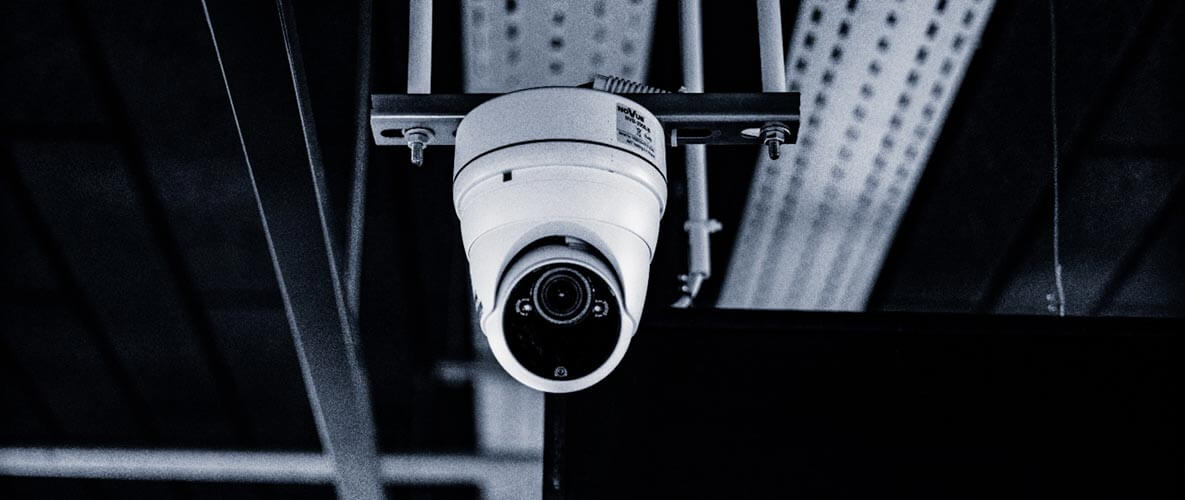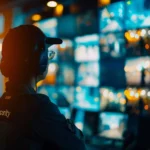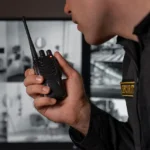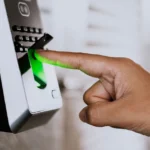Having the best video surveillance system protecting your property not only provides evidence in the event of a crime but also deters criminal activity in the first place and increases the safety of your employees and customers.

Understanding all the elements that make up a closed-circuit television (CCTV) system and how these systems work will go a long way in helping you make the best choice for your business.
What Makes a Video Surveillance System?
There is an overwhelming variety of cameras that can be used for video surveillance systems. All your camera options will, however, fall into either the analog or IP (internet protocol)/digital category:
- Analog
Analog cameras are traditional cameras that usually only offer lower resolution and require coaxial cable hook-ups for each camera to the DVR and separate wired connections for power. Additionally, to ensure better quality footage, the cameras must be located near the DVR. Their range of vision is typically smaller than IP/digital cameras, meaning more cameras may be needed to cover the same amount of space than one IP camera can cover. Finally, the recorded footage will further distort if an attempt is made to enlarge an image.
However, these cameras are cheaper, and they do have a wide variety of design options to ensure that you can find what you need at a reasonable price. Additionally, they won’t take up any of your network’s bandwidth, unlike IP/Digital cameras.
- IP/Digital
Internet Protocol cameras are digital cameras that possess much higher resolution and clearer images than analog cameras do. They connect to an NVR through a power over ethernet (PoE) switch and only use one cable to connect to both the NVR and the power source.
IP cameras do not need to be near the NVR to produce quality images, and their pictures can be digitally enlarged without severely degrading the quality of the image. Finally, IP cameras have a broader range of vision and many additional special features such as motion-triggered auto-recording, object recognition, and smart-technology options.
The downside to the digital IP cameras is that they are significantly more expensive, they do take up bandwidth from your network to transmit the images, and they require more storage. Furthermore, though they provide the convenience of being Wi-Fi cameras, which makes their feed remotely accessible, it also makes them hackable, so special attention needs to be paid to their security features.
For both analog and digital camera options, additional specialized features exist, such as cameras that can record quality images in poor lighting, multiple direction cameras, cameras that can capture long-distance images, and more.
Following is just a sampling of specialized camera options:
1. Internal / External Dome Cameras
Vandal-resistant and most common for basic indoor/outdoor surveillance, dome cameras prevent criminals from knowing which direction the camera may be pointing.
2. PTZ Pan/Tilt/Zoom Cameras
These cameras allow a live surveillance operator or security guard to actively move the camera left or right, up or down, or zoom the lens farther or closer.
3. Discreet Cameras
As their name implies, these cameras are hard to see and provide clear footage. They can be disguised as a variety of objects, can be mounted or propped, and are ideal for indoor use.
4. Bullet Cameras
Long and cylindrical in shape, these are most efficient for outdoor use, as they provide clear long-distance views.
5. Thermal Image / Infrared Cameras
Used by many airports, seaports, and premises that provide critical infrastructure, infrared cameras can provide quality 24-hour surveillance regardless of the time of day and light quality. They can capture figures moving even in pitch-black darkness, and the lenses have a long-distance range of over 900 ft.
6. ANPR/LPR Cameras
Automatic Number Plate Recognition (ANPR) or License Plate Recognition (LPR) cameras are highly specialized cameras that can read and store data on license and registration plates.
7. High-Definition Cameras
Provide such high-resolution images that they are mostly used in establishments with very high risks, such as casinos and banks.
How is a Video Surveillance System Monitored?
There are several ways in which the footage produced by a video surveillance system may be monitored.
Perhaps the most traditional and familiar method is by having a security guard or team who is responsible for viewing the live footage on the monitors/display units that are connected to the recorder. For the analog systems using coaxial cables to connect the cameras to their DVRs and display units, the monitors are often a monochrome screen, but they also may be HD with color.
However, with a vast majority of today’s security cameras being digital internet protocol cameras, the feed is now available via one’s network. So, while it may still be monitored on an official display unit, it can also be accessed via computers and mobile devices. Furthermore, some systems and cameras have the ability to wait until they detect movement and then send mobile notifications to authorized personnel who can then check the live feed.
How do Video Surveillance Systems Record?
Again, this depends on the type of system and how you have it set up.
In general, when a CCTV camera picks up movement, it will begin recording the footage so that it can be reviewed later. If you feel it is necessary for your property, you can choose to have the system record every second of footage but be aware that this takes up a massive amount of storage.
For systems using analog cameras, the footage will be sent from the camera to a DVR via a coaxial cable. The DVR, which has replaced old analog recorders with videotapes, will record footage from the analog cameras in digital format. Once the DVR’s hard disk storage is full, older images will be recorded over by newer ones, starting with the oldest images first.
For video surveillance systems using IP cameras, NVR will be used. The cameras and NVR are connected via a router or network switch but otherwise, work similarly. The recorded footage is encrypted and stored on a hard disk and can be viewed through a connected display unit, web browser, or mobile app.
Become a Master of Security!
It is easy to feel lost when trying to navigate the world of workplace security, but through Zagame Security Group, you will find that it is not so daunting after all!
We will help you explore the possible security systems you can implement, and we can customise these to match your needs for your business. Our Victoria Security licensed professionals will further guide you through the entire process, as we make sure our clients are not left in the dark.
Stay on top of your security game with Zagame Security Group
Contact us today at 1300 989 676 or at our website for a FREE quote!







